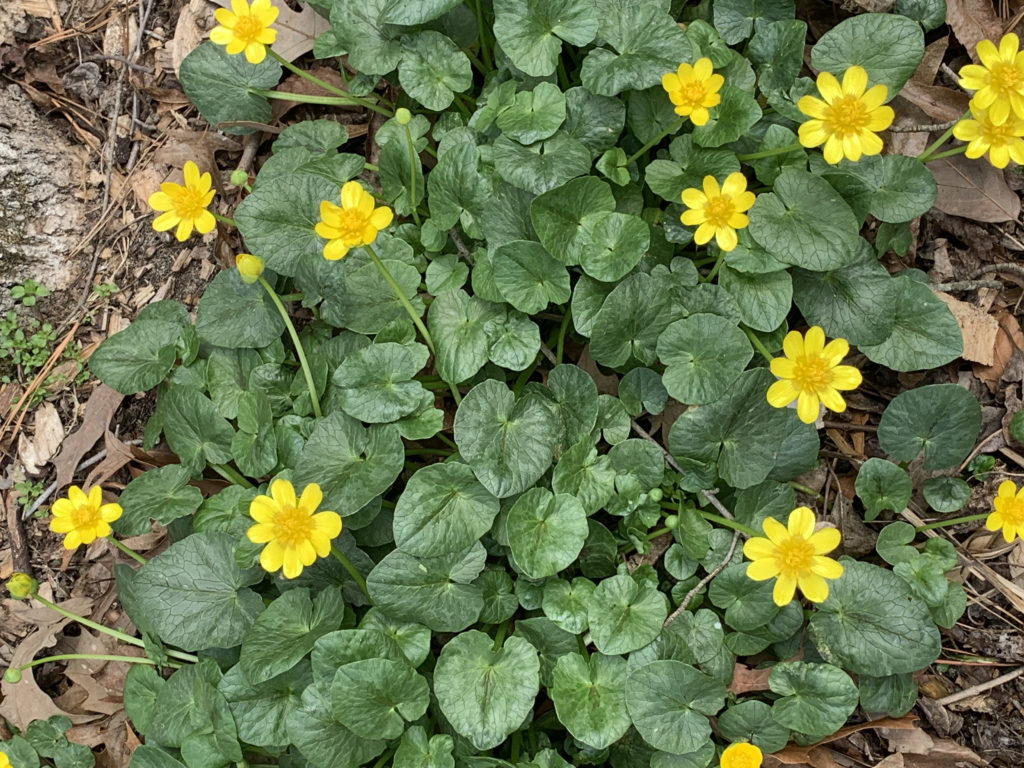Gardening for Health

Blooming Natives Get an Early Start
By Maria Price
Early spring blooming natives help our native bees looking for nourishment by providing pollen and nectar.
Chrysogonum virginianum, also known by the common names green and gold, goldenstar, or golden-knee, is one of the earliest native perennials to bloom, with bright yellow, waxy flowers and bright shiny green leaves that make a beautiful ground cover. The plant can be used to hold down a bank or along a shaded path.
The dark green leaves are opposite and ovate with scalloped edges. The hairy flower stems rise three to four inches out of the basal foliage, and as the plant grows, it makes a wonderful ground cover. The golden daisy flowers have five rays.
It flowers mainly in the spring from March to June and occasionally later in the year as well. As we go into late summer, the foliage disappears with less moisture. With enough moisture, it will grow in sun to part shade. It grows naturally in woodland settings and roadsides. It can be found in Pennsylvania and Ohio, South to Louisiana and east of Florida. It is hardy in USDA zones 5 to 8.
If too much rain occurs, fungal diseases will occur in the middle of the clump. Spray or remove the affected foliage. Powdery mildew can be a problem if the clump becomes overcrowded, divide the clumps to enhance circulation.
Seeds can be collected as the flowers dry. Sow them in containers at 40 degrees for about three months. Bring out when its 70 degrees and make sure to protect the seedlings from rodents.
Another early native is bloodroot or Sanguinaria canadensis. It makes a beautiful ground cover of pure white daisy flowers. It only grows about 6 inches tall and blooms from March to May. It prefers full shade and moisture. It prefers rich woods and open roadsides. It grows from New York to Pennsylvania to Maryland and Virginia. Bloodroot is one of the first spring ephemerals to flower. Its showy white flowers are over 2 inches in width and open fully on sunny days and close at night as the temperatures drop. The flowers resemble white candles with a solitary blue grey leaf wrapped around the stem that resembles a candleholder.
The rhizome releases a red sap when crushed, which contains a compound called sanguinarine which has been shown to reduce dental plaque on teeth in as little as eight days. You can find bloodroot’s plaque-fighting potential in toothpastes like Viadent.
